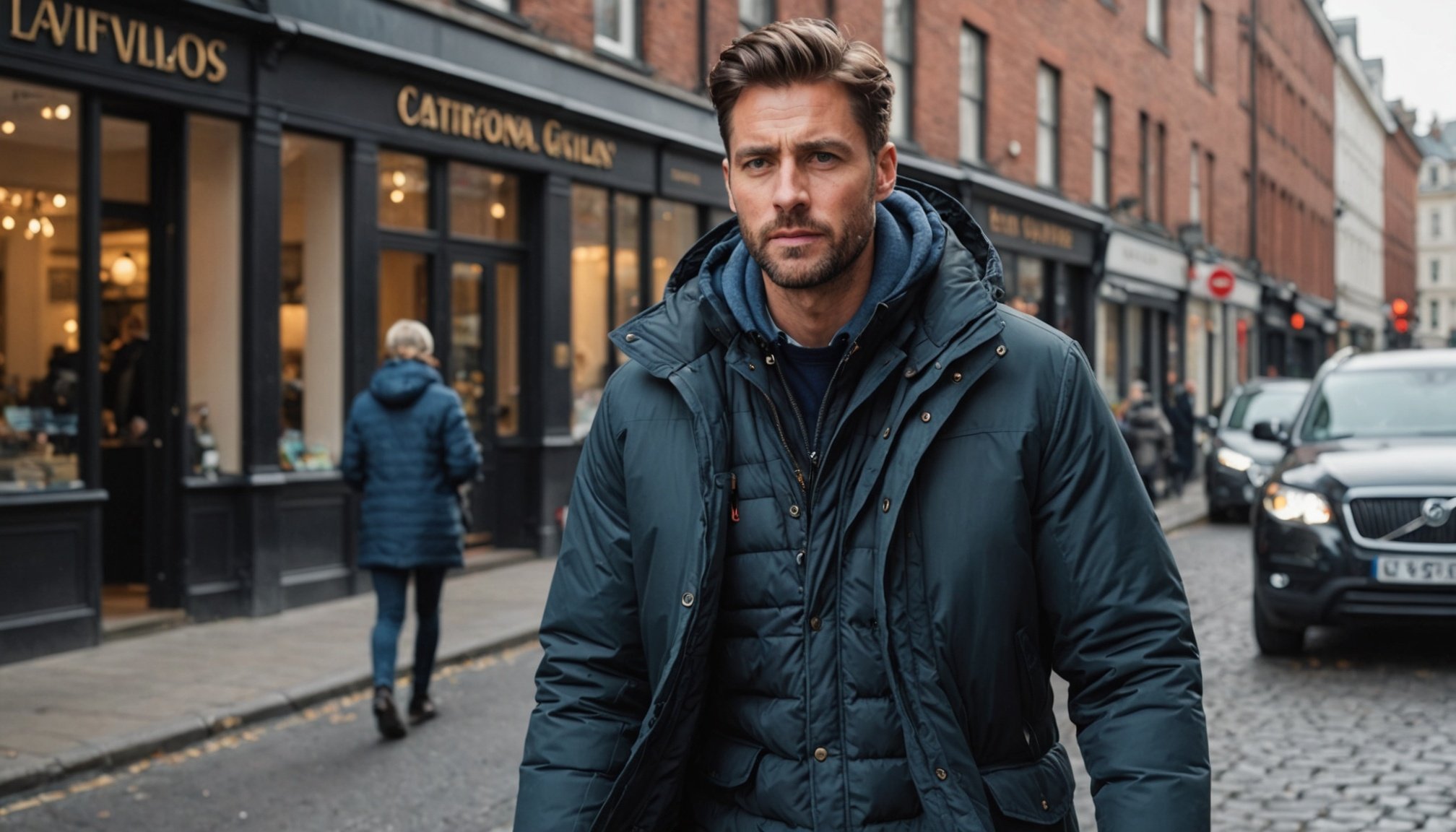As the cold winds of winter approach, you may find yourself scrambling to stay warm while still expressing your unique style. Layering is an effective technique that not only provides warmth but also allows you to create versatile outfits suitable for varying weather conditions. Understanding how to combine different layers of fabrics can make all the difference between a comfortable day out in the cold and a shivering experience. In this article, we will explore the best layering techniques, materials, and tips to ensure you remain cozy without compromising on your fashion sense.
Understanding the Concept of Layering
Layering is the art of wearing multiple layers of clothing to achieve both warmth and style. Each layer serves a purpose, whether it’s to provide insulation, wick away moisture, or act as a protective outer shell. When done correctly, layering can transform a simple outfit into a fashionable statement while keeping you warm in the cold.
Also read : How can you effectively mix high-end and affordable pieces in your outfits?
The first layer, known as the base layer, is crucial. It is typically made from synthetic materials or wool, designed to wick moisture away from your body. This keeps you dry and comfortable, preventing the chill of sweat from ruining your day. For example, wearing a fitted wool or synthetic sweater as a base layer can significantly enhance your comfort.
The second layer is about insulation. This is where you can get creative with your style. Think of comfortable sweaters, fleece pullovers, or even wool cardigans. These materials trap heat close to your body, providing essential warmth in frigid conditions. You can mix textures, colors, and styles to reflect your personality while staying snug.
Topic to read : Step up your style: discover chic victorian punk boots
Finally, the outer layer, or shell layer, shields you from environmental elements like wind, rain, or snow. A stylish jacket not only completes your look but serves as a barrier against the harshness of the weather. Look for jackets made from weather-resistant materials that don’t compromise on style.
By understanding the role of each layer, you can make informed decisions when putting together your outfits. This means you’ll stay warm and fashionable, no matter how low the temperatures drop. Let’s delve deeper into each layer and discover what makes them essential for a well-rounded winter wardrobe.
Choosing the Right Base Layer
The base layer is foundational to effective layering. It’s the first point of contact with your skin, so it’s vital to choose the right fabric. The ideal base layer should be moisture-wicking, breathable, and comfortable against your skin.
Wool has long been hailed as one of the best materials for a base layer. Merino wool, in particular, is soft, lightweight, and excellent at regulating body temperature. Unlike traditional wool, which can be itchy, merino offers a luxurious feel while providing warmth. This natural fiber is also great at wicking moisture away, keeping you dry and comfortable throughout the day.
If you prefer synthetic options, look for fabrics such as polyester or nylon, which also offer moisture-wicking properties. Many brands now create high-performance base layers designed for active wear, perfect for those who might be hitting the slopes or going for a brisk walk in the park. Look for options that feature flat seams to minimize chafing and enhance comfort.
When selecting your base layer, consider the fit. A snug fit is ideal as it helps trap warmth and wick moisture effectively. However, be cautious not to opt for something too tight, as this can restrict movement and lead to discomfort. For those who prefer a looser fit, consider layering a second piece to maximize warmth without sacrificing comfort.
Color and style can also be personalized in your base layer. While neutrals are versatile, don’t shy away from bold colors or patterns to express your fashion sense. Layering lets you mix and match pieces, so you can easily switch up your look. As you build your winter wardrobe, remember that the right base layer sets the tone for the rest of your outfit.
Insulating Layers for Warmth
Once your base layer is in place, the next step is to choose the insulating layer. This layer is crucial for retaining warmth and can elevate your outfit from ordinary to extraordinary in style. Here, you can play with various fabrics, textures, and fits to create a cozy yet fashionable ensemble.
Wool sweaters and fleece pullovers are fantastic choices for your insulating layer. Both materials offer excellent insulation, ensuring that you stay warm even in the most frigid conditions. A wool sweater can add a touch of sophistication to your outfit, especially when paired with tailored pants or a chic skirt. Opt for layers that are easy to remove as you transition between indoor and outdoor environments.
Consider experimenting with different styles for your insulating layer. Chunky knit sweaters provide a cozy vibe, while sleek, fitted pullovers can offer a more polished look. Don’t forget about vests; they are an excellent option for layering as they keep your core warm while allowing freedom of movement for your arms.
Color coordination plays a significant role here. When layering, aim to mix and match colors that complement each other. You might try a vibrant sweater paired with a muted base layer to create depth in your outfit. Patterns can also add an interesting visual element. Stripes, checks, or fair isle designs can be chic choices, adding character to your winter look.
For those particularly cold days, don’t hesitate to add more than one insulating layer. A light sweater worn over a fitted long-sleeve tee can provide extra warmth without bulk. The key to successful layering is balancing comfort and style while ensuring that you can easily adjust your layers as needed.
Protective Outer Layers
The outer layer is your final line of defense against the elements. This layer should protect you from wind, rain, and snow, while still letting your personal style shine through. Choosing the right outer layer is crucial for maintaining warmth and comfort during winter outings.
When selecting a jacket, look for options made from high-quality, weather-resistant materials. Fabrics such as Gore-Tex or treated nylon can repel moisture and wind, providing a barrier between you and the harsh weather. Insulated jackets that feature synthetic fillings or down offer excellent warmth. However, ensure these jackets are also breathable to prevent overheating when indoors.
Style-wise, you have plenty of choices. A classic trench coat can elevate your outfit, making it suitable for more formal occasions, while a sporty puffer jacket can keep you stylishly casual. For those who enjoy a more rugged look, consider a leather jacket or a stylish parka that adds character to your wardrobe.
Don’t overlook the importance of functionality in your outer layer. Look for features such as adjustable hoods, cuffs, and pockets that can enhance your experience in colder climates. Additionally, consider layering your outer layer over a slightly looser insulating layer to ensure you maintain mobility.
Color and pattern also come into play. Neutral colors often pair well with various outfits, but don’t hesitate to incorporate bold colors or unique patterns that reflect your personality. This way, your outer layer can be a standout piece in your winter wardrobe, showcasing your personal style while providing the necessary protection against the chill.
Accessorizing Your Layers for Maximum Warmth
To complete your winter look and enhance the warmth provided by your layers, consider incorporating accessories into your outfit. Accessories not only add a style quotient but also serve practical purposes in keeping you cozy during the cold months.
Start with hats and beanies. These accessories are essential for retaining heat, as a substantial amount of body heat escapes through your head. Opt for knitted styles, which come in various colors and patterns, allowing you to express your individuality. A stylish beanie can effortlessly elevate your ensemble while keeping you warm.
Next, consider scarves. A thick, knitted scarf in a complementary color can be wrapped around your neck, adding both warmth and flair. You can play with different tying styles for added visual interest. Scarves are versatile; they can be draped, looped, or even worn in a classic knot, offering endless styling possibilities.
Don’t forget about gloves and mittens. These accessories protect your hands from the chill while adding a finishing touch to your outfit. Leather gloves can lend a sophisticated air, while knitted mittens infuse a cozy vibe. Choose colors that either match or contrast with your outer layer for a cohesive look.
Lastly, consider thermal socks or stylish boots for your feet. Keeping your extremities warm is crucial in ensuring overall comfort. Opt for socks made from wool or thermal materials that provide insulation without adding bulk. Pair them with fashionable boots that are both functional and chic, allowing you to stride confidently through the snow or slush.
Incorporating these accessories can drastically improve your layering game, providing an extra dose of warmth without sacrificing your style. Remember, layering is not just about clothing; it’s about creating a holistic, fashionable winter look that keeps you cozy and ready for any winter adventure.
Mastering the art of layering can dramatically enhance your winter experience, allowing you to stay warm without compromising on style. By understanding the significance of each layer — from the moisture-wicking base layer to the insulating middle layer and the protective outer layer, you can curate outfits that are not only functional but also fashionable.
As you prepare for the cold months ahead, remember to choose fabrics that promote warmth and breathability. Experiment with different styles, colors, and patterns to express your personal taste. Don’t overlook the impact of accessories, which can elevate your look while providing that much-needed protection from winter’s chill.
With these tips in mind, you can confidently face the winter weather, staying warm and stylish throughout the season. So go ahead, embrace the art of layering, and make this winter your most fashionable yet!











